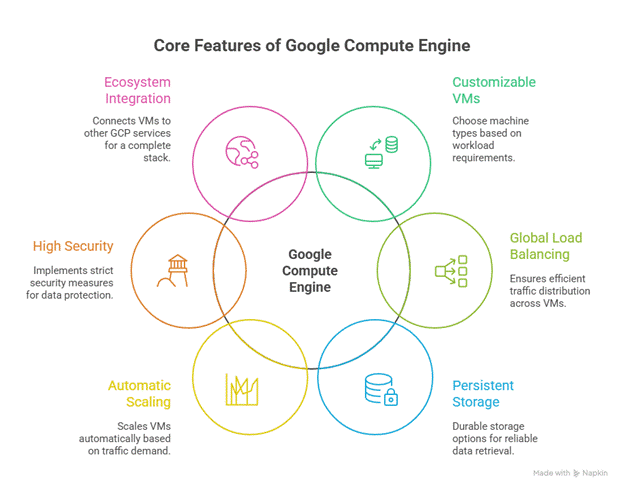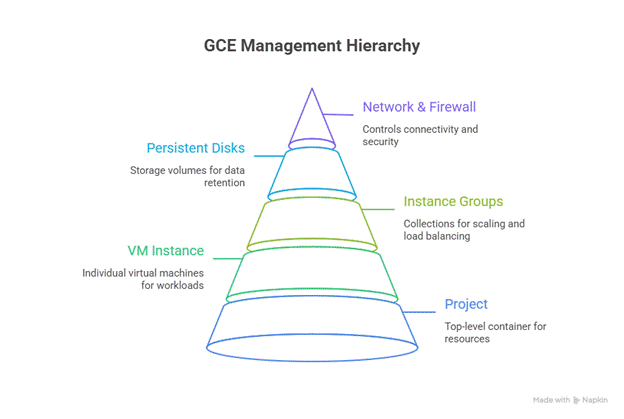In the modern cloud era, businesses and developers need scalable, flexible, and reliable computing resources to build, test, and deploy applications. Google Cloud Platform (GCP) provides a rich ecosystem of services, and one of its cornerstone offerings is Google Compute Engine (GCE). As we dive into Day 4 of our cloud learning journey, let’s explore what GCE is, why it’s essential, and how you can harness its full potential.
What is Google Compute Engine?
Google Compute Engine is an Infrastructure-as-a-Service (IaaS) platform that allows you to create and run virtual machines (VMs) on Google’s global infrastructure. Think of it as renting a highly configurable computer in the cloud. Unlike traditional on-premise servers, GCE gives you the power to scale resources dynamically according to your needs, ensuring that your applications are always performant and cost-efficient.
With GCE, developers gain full control over their virtual servers, including CPU, memory, storage, and networking. Whether you are running a small website or a high-performance application that requires massive computational power, GCE provides the flexibility and reliability needed to meet these demands.
Key Features of Google Compute Engine

GCE Hierarchical Overview
To better understand how GCE fits into the Google Cloud ecosystem, here’s a hierarchical diagram:

Getting Started with Google Compute Engine
Practical Use Cases for GCE
.
Why Learning GCE Matters
For anyone pursuing a career in cloud computing, mastering GCE is essential. Unlike basic cloud storage or platform services, GCE teaches core infrastructure management, networking, and resource optimization. It equips developers with the knowledge to handle real-world enterprise applications on a global scale.
At Curiosity Tech, we emphasize hands-on learning. Our platform not only provides guidance on cloud technologies like GCE but also integrates insights from real-world projects to ensure learners gain practical, applicable knowledge. Whether it’s understanding virtual machine architecture or optimizing deployment strategies, curiositytech.in bridges theoretical learning with actionable skills.
Infographic Idea
Title: “GCE Workflow: From Project to Production”
- Step 1: Create Project → Step 2: Launch VM → Step 3: Attach Persistent Disk → Step 4: Configure Networking → Step 5: Monitor & Scale
- Include icons for cloud, servers, disks, network, and analytics for visual impact.
Conclusion
Google Compute Engine is more than just a virtual machine service—it’s a gateway to building robust, scalable, and efficient cloud applications. By understanding its features, architecture, and practical use cases, developers can leverage GCE to achieve remarkable results. As you continue your cloud journey, hands-on experimentation with GCE will strengthen your skills, preparing you for advanced services in Google Cloud.
At Curiosity Tech, we aim to make these advanced concepts approachable. Through in-depth tutorials, practical exercises, and expert guidance, learners can confidently navigate the cloud landscape and unlock new opportunities.


